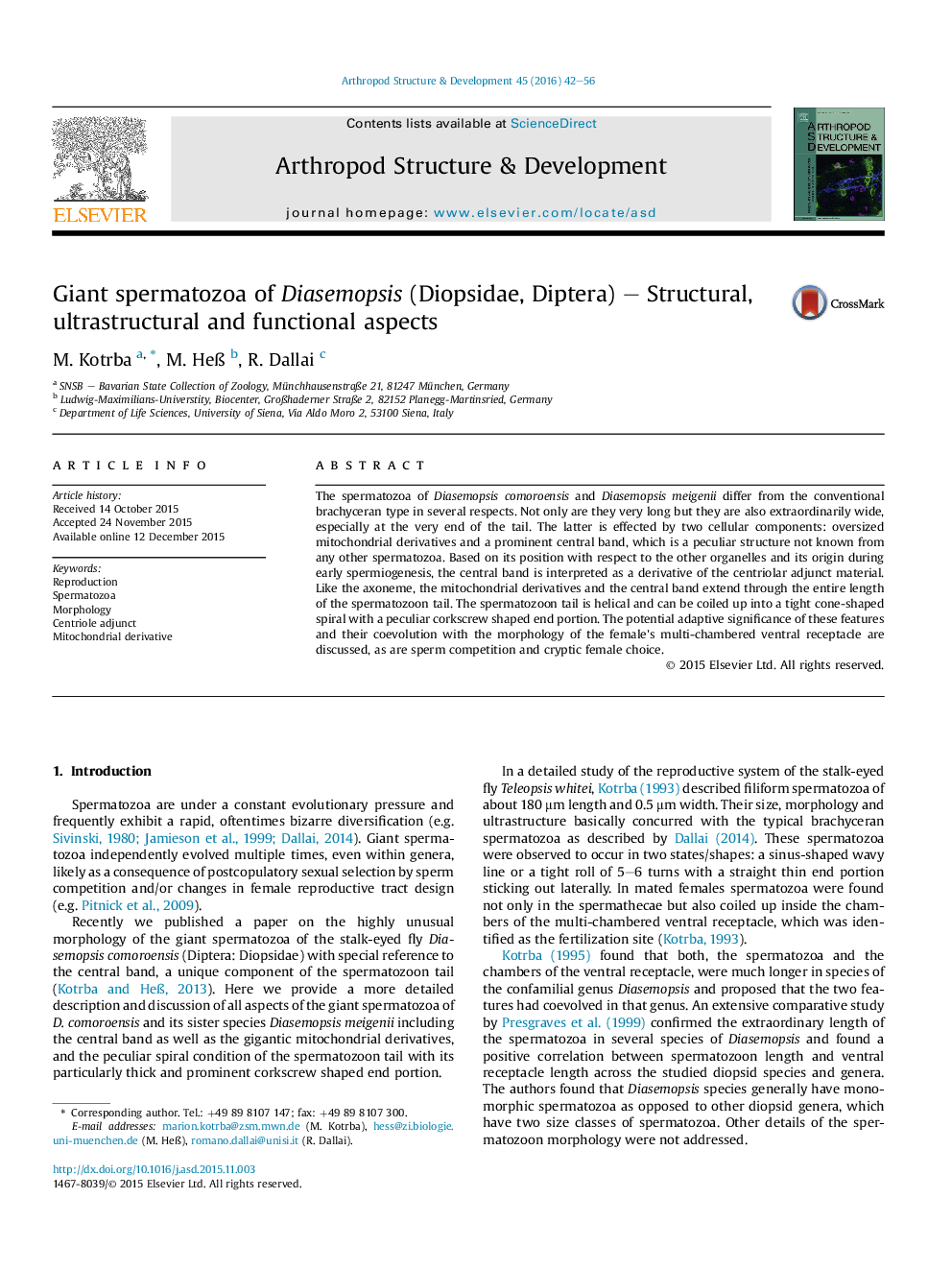| Article ID | Journal | Published Year | Pages | File Type |
|---|---|---|---|---|
| 2778564 | Arthropod Structure & Development | 2016 | 15 Pages |
•Spermatozoa of Diasemopsis comoroensis and meigenii are extremely long and wide.•A unique very prominent central band extends through the entire spermatozoon tail.•The oversized mitochondrial derivatives reach their maximal width at the tail end.•The spermatozoa form densely coiled spirals with corkscrew shaped end portions.•These spirals lodge in the tubular chambers of the female's ventral receptacle.
The spermatozoa of Diasemopsis comoroensis and Diasemopsis meigenii differ from the conventional brachyceran type in several respects. Not only are they very long but they are also extraordinarily wide, especially at the very end of the tail. The latter is effected by two cellular components: oversized mitochondrial derivatives and a prominent central band, which is a peculiar structure not known from any other spermatozoa. Based on its position with respect to the other organelles and its origin during early spermiogenesis, the central band is interpreted as a derivative of the centriolar adjunct material. Like the axoneme, the mitochondrial derivatives and the central band extend through the entire length of the spermatozoon tail. The spermatozoon tail is helical and can be coiled up into a tight cone-shaped spiral with a peculiar corkscrew shaped end portion. The potential adaptive significance of these features and their coevolution with the morphology of the female's multi-chambered ventral receptacle are discussed, as are sperm competition and cryptic female choice.
Graphical abstractFigure optionsDownload full-size imageDownload as PowerPoint slide
